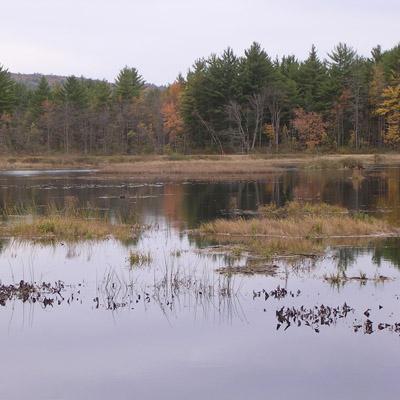Suburbanization, Water Quality, and Property Values in Three Northern Forest Watersheds

Human activities, such as urban- and suburbanization, sewage treatment, and agriculture, can have large impacts on water quality. Elevated concentrations of nitrogen and/or phosphorus in streams indicate pollution from sewage, septic systems, fertilizer, and agricultural run-off or other human activites. Nutrient overloads can cause algal blooms and fish mortality.
The Northern Forests of New Hampshire are under considerable pressure for development because of population growth and urban sprawl. Working in three watersheds, NSRC researchers discovered that increases in human population density, urban land use, and property value are directly related to increases in stream water nitrogen. High property values are typically associated with large areas of impervious surfaces, such as roofs and driveways, that generate run-off of rainwater and snowmelt into streams.
Wetlands, riparian zones, and forest soils act as strainers that can retain or transform nitrogen from surface run-off. Loss of wetlands and forested areas due to development and subsequent changes in nitrogen retention could worsen impacts of population growth. A better understanding of the mechanisms controlling nitrogen retention and transformation are critical to making future predictions about water quality.
Download printable version [PDF]
Download full final report [PDF]
